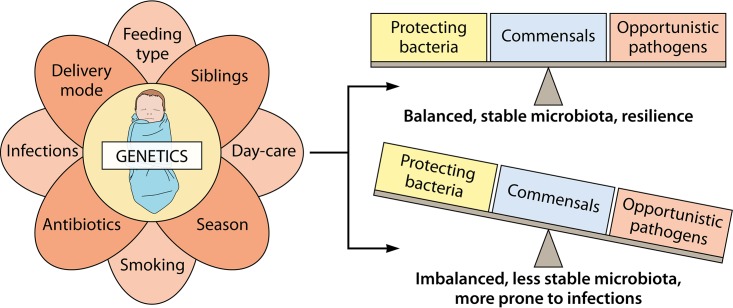FIG 3.
Factors influencing the respiratory microbiota and/or bacterial density. First colonization in early life takes place during birth. The mode of delivery (natural versus Caesarian section) largely influences the microbial community in the newborn’s respiratory tract. Afterwards, the dynamics and evoluation of the microbiota are driven by many other environmental factors, such as feeding type, having older siblings or not, attending day care, the season, growing up in an environment with smokers, taking antibiotics, and having infections. Together with the host’s genetics, which influences the bacterial density in the nasopharynx, the microbiota can develop toward a balanced, stable microbiota where resilience, i.e., the ability of the host to remain healthy even when exposed to a stress, occurs. Conversely, the microbiota can also develop toward a community that is imbalanced, less stable, and more prone to infections and inflammation. The figure is based on data from references 1, 3, 15, 42, and 52.

